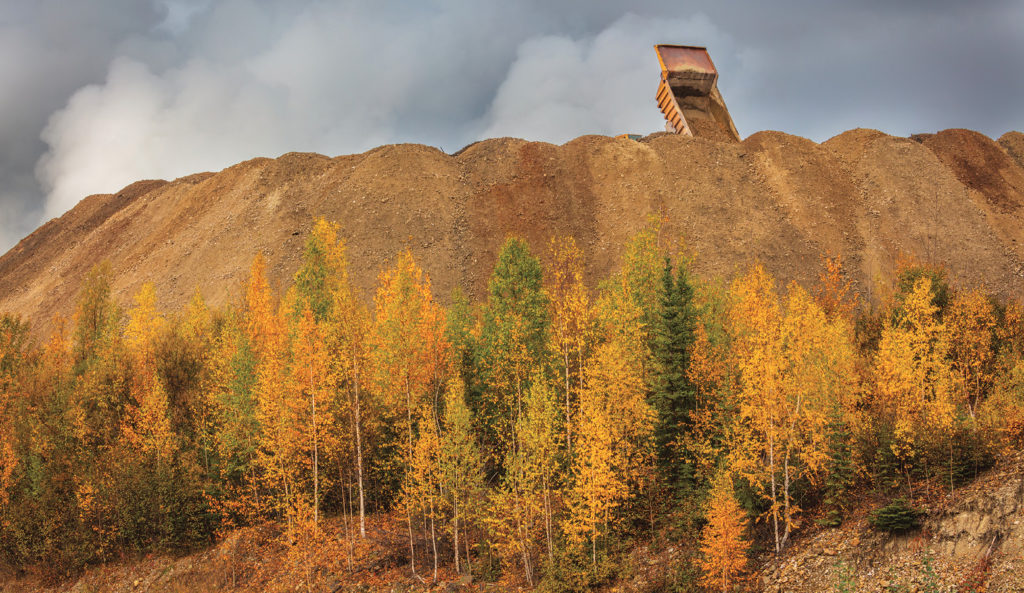Sustainably and quickly getting critical minerals to market

Building the infrastructure to meet the world’s energy transition goals will require more minerals than we have right now. We need minerals and metals for every component of our modern world, as well as the world we are building. Mined materials are used to create batteries, solar panels, wind turbines, and the associated infrastructure for clean energy projects. The demand is here – and it is growing along with these technologies.
So, we – the world – are facing an incredible challenge. Not only do we need to meet the demand for minerals and metals, but we must also mine in a responsible and sustainable way. Now, in addition to prioritizing safety and maximum throughput, miners must consider their environmental footprint, community acceptance, and workforce inclusion.
It is clear the world needs minerals and metals to enable modern life. But with long permitting timelines for new mines, how can we get the minerals we need? For new mines, it can take 10 years or more to get from initial exploration to operation. For existing operations, we are faced with targeting deeper mineral deposits with higher rock stress zones and hot temperatures – all these challenges can lead to reduced productivity and depleted returns. So, we are looking for other solutions that take less time and can supplement the mineral supply chain.
Mine and then re-mine
Residual minerals are often present in waste piles and tailings. Reprocessing tailings is a viable option to access critical minerals more quickly. It is attractive because mining companies can forgo the full permitting process required for new mines. Reprocessing tailings is also a form of asset transformation, taking a liability (tailings impoundment) and repurposing it as an asset (ore).
For example, we recently developed a client’s initial design brief into a commissioned pilot plant that could improve gold recovery from tailings waste. The plant tested back-end recovery of a new flotation tailings stream through the existing gold plant. The client wanted to understand whether the existing carbon-in-leach circuit had the additional capacity to accept flotation material and recover sufficient gold. The pilot plant was successful, and now our client can replicate this tailings waste recovery solution – improving gold collection efficiency.
Improve productivity in existing operations
It sounds like the obvious answer: We will get more critical minerals to market faster if we increase recovery rates and reduce waste. What kind of processes can we automate to reduce downtime? Where can we reduce bottlenecks in the workflow?
Although iron is not typically deemed “critical,” in this debottlenecking example, BHP was able to process an additional 2 million tonnes per year through their plant in Pilbara, Western Australia. The total capital was A$3 million to adjust chutes, add screens, replace motors, and replace other minor equipment within the plant.
Again, one of the bigger challenges with this solution is potential changes to production schedule. Mine operators must do their due diligence and conduct thorough analysis when choosing to implement a modern technology or change current workflow.
Embrace technology partners and collaboration
With so many technology providers and innovative start-ups, it can be overwhelming for a mining company to take on vetting providers, selecting the best option, and creating a collaboration agreement. Consultants can bridge that gap and bring an intimate understanding of emerging and best available technologies. This is key for meeting increasingly challenging social and environmental obligations.
For example, our mining, minerals, and metals group leverages many non-agnostic original equipment manufacturer and technology provider collaborations, and this service can be offered to clients. Because of the huge value this offers, I expect the technology partnership/collaboration business model will grow in popularity and be more of the “norm” for many consulting companies moving forward.
Critical minerals are our future
The world needs minerals and metals to enable modern life. And we need mines that produce those resources responsibly. No matter how much we reprocess tailings and improve recovery, we will also still need new mines to keep up with the demands of the energy transition. This is where we need strong collaboration between mining companies, Indigenous and non-Indigenous communities, government agencies, and investment communities to produce positive outcomes. The ideal situation is to decrease the permitting time while still taking great care to operate sustainably and in a way that benefits people.
As an industry we must act
There are great plans in place that show state and federal governments realize the importance of mining. For example, the Canadian Critical Minerals Strategy of 2023 is a great starting point, identifying 31 minerals deemed necessary for Canada’s economy and security. The United States Critical Minerals Strategy was created in 2022 and identifies 50 mineral commodities that are also deemed integral to the prosperity and growth of the U.S. economy. In June 2023, Australia released theirs, outlining six focus areas for growth in the Critical Minerals Market.
We, as the mining industry, need to work more closely with state and federal governments to act on these plans and support critical minerals strategies. We must be more sustainable, and that includes re-mining materials. We must be efficient and examine our production, and partner with technology providers. This will help us to meet the critical mineral needs of today and for future generations.
Brian Mashford is senior vice-president, mining, minerals, and metals at Stantec
Comments